Miguel Zenón grew up in Residencial Luis Lloréns Torres, the largest housing project in Puerto Rico. At 10, he began studying with Ernesto Vigoreaux, an elderly gentleman who traveled from the adjacent neighborhood every day to work with disadvantaged youth. Those early lessons led to admission to Escuela Libre de Música, where he trained for six years on classical saxophone. By 11th grade, he'd heard jazz for the first time—friends at school introduced him to Charlie Parker and the concept of improvisation—and despite an engineering scholarship from Puerto Rico's foremost technical institution, he spent a year and a half gathering funds to move to Boston in 1996 to study at Berklee College of Music.
Twenty-nine years later, Zenón is a MacArthur Fellow, a Guggenheim recipient, a Doris Duke Artist, and a 2024 Grammy winner for El Arte del Bolero, Vol. 2. He holds an honorary doctorate from Universidad del Sagrado Corazón. He's appeared on more than 100 recordings as a sideman and released 18 albums as a leader. In 2011, he founded Caravana Cultural, an initiative that organizes free jazz concerts in rural areas of Puerto Rico, using music as what he calls a "social investment" in the island. The Jazz Journalists Association named him Alto Saxophonist of the Year in 2015, 2018, 2019, and 2020, and Composer of the Year in 2023.
His latest album, Vanguardia Subterránea, is the first live recording from his longstanding quartet—pianist Luis Perdomo, bassist Hans Glawischnig, and drummer Henry Cole. Despite hundreds of concerts over two decades, the quartet's phenomenal shows have never been captured on record until now. Zenón recorded Vanguardia Subterránea over two nights in September 2024 at the Village Vanguard, the subterranean sanctuary on Seventh Avenue South that's had a full-time jazz policy since 1957. The album features six original compositions plus his arrangements of Willie Colón and Héctor Lavoe's "El Día de Mi Suerte" and Gilberto Santa Rosa's "Perdóname."
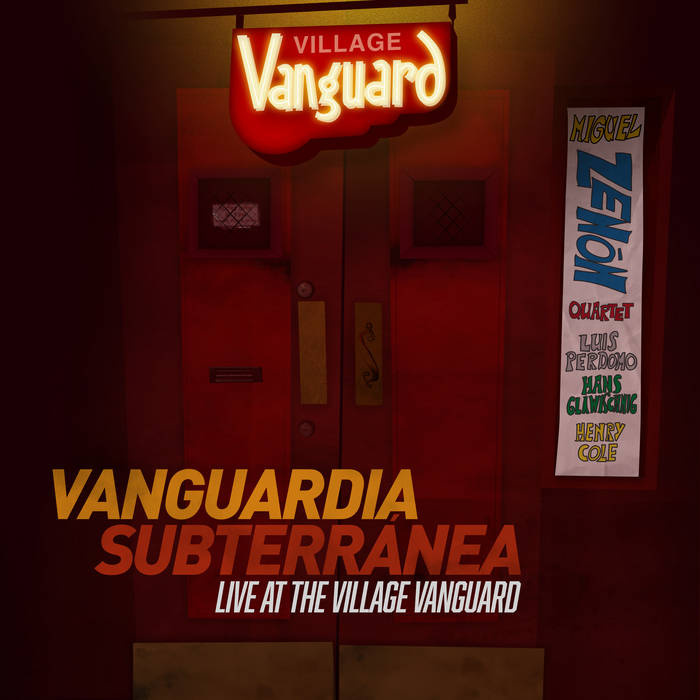
The opening track, "Abre Cuto Güiri Mambo," takes its title from a phrase in bozal—first-generation African Spanish—that means "open up your ear and hear the mambo." It's an exhortation associated with Arsenio Rodríguez, whose 1940s Havana band with trumpets, piano, and conga established a way of layering horns over drums that became foundational to salsa. "Vita" showcases Zenón's lyrical streak. He wrote it in 2010 as a private birthday present for his grandmother, Jovita Soto Santiago, now 95, who has the original score framed in her home. "Coordenadas" encodes the Village Vanguard's geographical coordinates and each band member's birthplace into pitches—a conceptual game in which the four musicians play their origins at this famous location.
In his arrangements of popular songs, Zenón draws on the originals but transforms them completely. "El Día de Mi Suerte" comes from his teenage years in San Juan, when he'd drive to rehearsals with a salsa band, listening to Willie Colón and Héctor Lavoe over and over. "Those records are really deep within my DNA," he says in the press materials. "Perdóname" pays tribute to Gilberto Santa Rosa, one of the most facile soneros—improvising singers—in Puerto Rican salsa history, specifically referencing his dizzying extended improvisation from a 1995 Carnegie Hall recording. Playing jazz to evoke a great sonero is typical of Zenón's vision: unusual, exhilarating, and rooted in the deep connection between New York and Puerto Rico that's shaped jazz history.
Lawrence Peryer recently hosted Miguel Zenón on The Tonearm Podcast. They discussed the 20-year bond that's made his quartet's chemistry so distinctive, Zenón’s approach to live recording versus studio work, the conceptual systems behind his compositions, and how his artistic responsibility extends to the immigrant experience—a topic he explored in his Golden City project.
You can listen to the entire conversation in the podcast player below. The transcript has been edited for length, clarity, and flow.
Lawrence Peryer: You and I spoke 14 years ago—almost to the day, it was this week in 2011. We were talking about Alma Adentro. There was something you said in that conversation I wanted to ask you about. You commented that you felt you were still filling in holes in your knowledge of tradition, jazz, and Puerto Rican music.
Miguel Zenón: Yeah, I guess I would say that I kind of feel the same way. I think one of the great things about being a musician, at least for me, is that there's always something new to learn and to get better at. The work is never really complete. There's always something new to cover; someone comes up with a new idea or a new way of doing things, and that's inspiring.
I think there was a time, especially when I was younger, when I saw this hole as something that was like a deficiency—something you need to get better at. And now maybe I see it more as just more information to gather—something new to add to your well of knowledge. I still feel the same way about jazz and Puerto Rican music and about everything, to be honest.
Lawrence: Keeping a quartet together for 20 years is so impressive. What made this the right time to document the band live? What made the Vanguard the place in which to do it?
Miguel: The Vanguard is sort of the mecca of jazz. It's a milestone for any musician to play there. So we feel very privileged just to get the opportunity to come back there from time to time every couple of years.
We've been thinking about documenting the band live for a little while. There are challenges to live recordings versus studio recordings. I feel a studio recording is like a puzzle. A live recording is just to go and play it like a show—it's a different environment, a different aesthetic, a different mindset.
When we play at the Vanguard, we know way in advance—one or two years before—that it's going to happen. So I ran it by them when they first reached out and said, “Next time we're there, I want to try to do this.” We planned it in advance. All the music I was going to write—everything we were going to do, working our way up to it—was going to be with the idea that the music would be documented.
Honestly, it is intimidating to do something like that at this place because so many amazing recordings have been made there. But it was something I thought was kind of due for the band. We've been playing together for a long time, and there's a certain energy that bands project when they play live. So it was really nice to get the opportunity to do it in this setting.
Lawrence: Years ago, I saw this funny quote from Jerry Garcia. He said, The Grateful Dead play in three places: we play at home, we play in New York, and we play on the road. (laughter) New York stood out as the place for them—the different energy. Does the Vanguard fit in that conception at all for you?
Miguel: Oh, most definitely. It feels different there than anywhere else. And just as a side note, I'm sort of a big believer that this music—creative music, jazz music, however you want to call it—it's meant to be played in places like the Vanguard. A place where you're intimate, the audience is right in front of you, and the musicians are close by. It's nice to play in a theater, at a festival, and for big crowds, but I believe this music is meant to be played [in an intimate venue]. That's really the best environment for the music, not just in terms of communication on stage, but also with the audience. That plays a big part.
New York audiences are special and unique. In combination with the Vanguard's mystique and all the music that's been performed there, that definitely makes this a very unique place to play.
One thing I was thinking about, especially with more recent Vanguard recordings, is that the audience has gotten bigger over time. When Sonny Rollins was recorded there, there were maybe 20, 30 people in the crowd, 40 maybe. Now they can get 150 in there. So the recordings naturally have more energy coming from the crowd, and you can feel it. That was exciting to me—just that idea of you're going to get this energy from the crowd that's not like a stadium crowd. It's more like a crowd that's almost sitting on stage with you, constantly reacting to the music like another member.
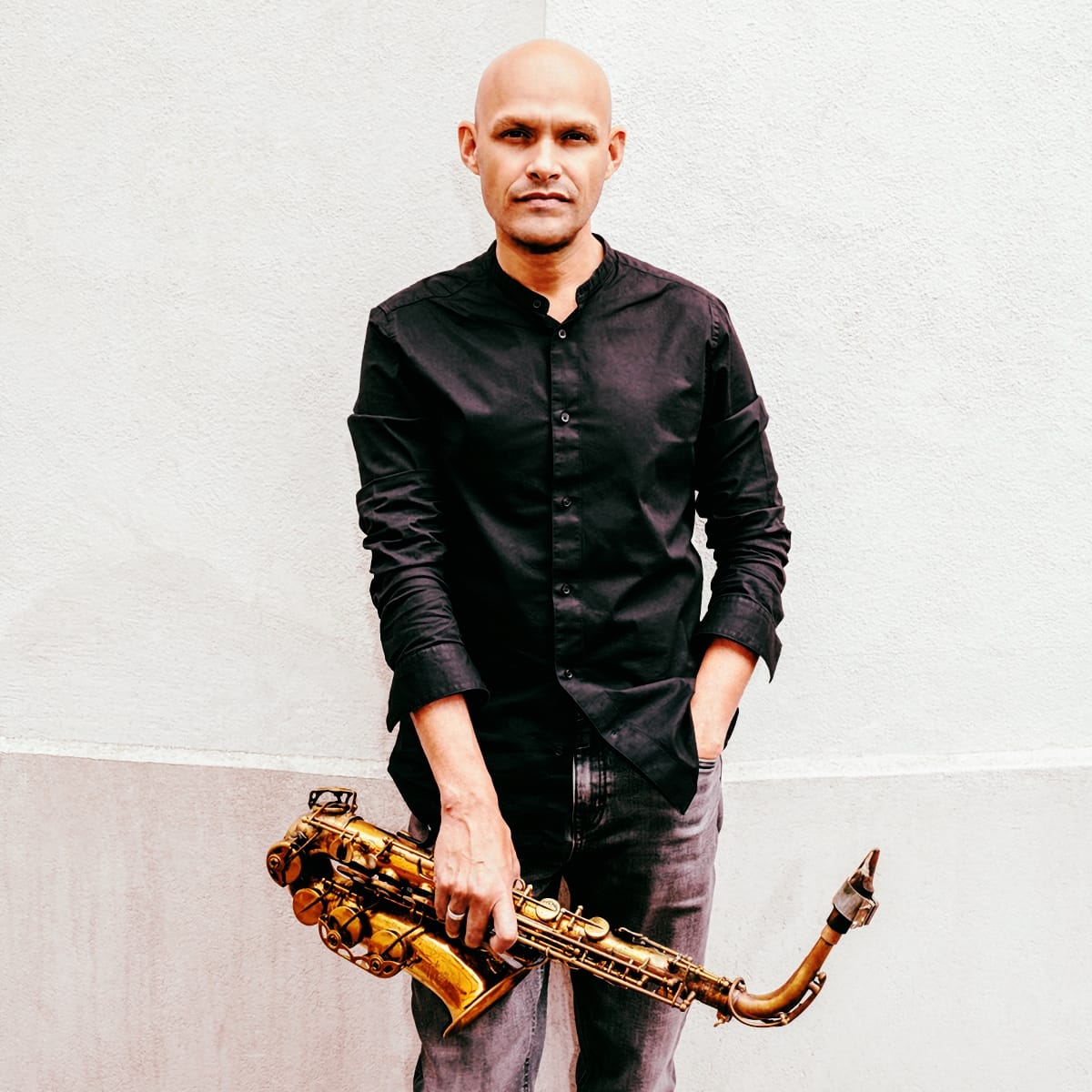
Lawrence: Let's talk about some of the songs on Vanguardia Subterránea. Could you share a little bit about the personal stories behind "Vita" and "Bendición"?
Miguel: "Vita" is a song that I wrote for my grandmother when she turned 80. She's 94 now, so it was a little while ago. Initially, the song was called "Segunda Madre," or "Second Mother"—my grandmother and my mother together. I wrote it as a really simple song. It had lyrics; it was a lead sheet. I played it with a guitarist friend at her birthday, and I sang the lyrics for her. So it was meant to be a song for her.
When it came time to start thinking about the repertoire for the album, I was missing a song like this—something that I wanted to be a bass solo and something that had this more lyrical character. That's how this song ended up in the project. The version that we do here is really different than the original.
And then "Bendición"—a lot of times when I'm writing songs that have this more lyrical quality to them, I write lyrics to the song, even though the lyrics will never be heard. I just write it as a way to make the melody a little more expressive as an instrumentalist. So I started writing this song, and the first phrase kind of sounded like "bendición" to me.
"Bendición" means "blessing," but in Puerto Rico and other places in the Caribbean, it's a term of endearment and respect to your elders. I was taught as a child that when you see your elders, you say "bendición," you ask for their blessing. Then they'll say "Dios te bendiga," they give you their blessing. I still do that today with my grandmother, with my aunts. It's very common in Puerto Rico. So I made the connection with the word, my elders, and my mother, and it kind of all came together.
These songs are obviously really personal—they're dealing with family and my connection to them. But it was special to me because it was this project, performed live, featuring these two songs as tributes to people who are important to me.
Lawrence: Do you set them up that way when you perform them?
Miguel: I do. Yeah. We took the stage talk out of the recording, but yes, I usually spend a little time with these songs and some of the others, too, just talking about what they mean and what they are.
Lawrence: When you write the lyrics in those instances where you're not going to use them, but they're sort of a melodic construct or melodic aid, do you write in English or Spanish?
Miguel: Always in Spanish.
Lawrence: Always in Spanish?
Miguel: Yes. Always in Spanish. Pretty much. I can't remember any song that I've written or any lyrics that I've written that are in English, mainly—I mean, I think in Spanish, but also I feel that my connection to the language, especially when thinking about something lyrical, is more natural in Spanish than in English or any other language. So the lyrics are usually—yeah, always in Spanish.
Lawrence: Something I love to ask band leaders about—what shift is required in your thinking when you move between being a leader and keeping it collaborative, having your vision executed, versus leaving room for your musician partners?
Miguel: It changes depending on the environment. If I'm coming in to work with a group of musicians and I'm leading the band—we're playing my music, but it's not necessarily my band—my approach there is going to be more head-on: "Okay, so this is what we need to do. This is how we hear this, this is how this needs to happen."
My approach with my band is very different because we've been playing for a very long time. So I say very little, just sending them the music and some kind of audio reference. And then we have a more collaborative thing in terms of putting the pieces together, without really speaking much. It's more about playing and finding our way through it.
With other bands, like the SFJAZZ Collective, it was collaborative in nature. There were times when you were a leader, and you were leading the band, and other times when you were kind of standing back and just following someone else. And there are other instances when I'm just playing as a sideman. And that's something I really enjoy too, because I learn a lot from seeing how someone else takes the lead.
Lawrence: You've talked about the importance of chemistry and being around people you actually like. That's a very intentional approach. Were you always like that, or did you learn that from some difficult experiences?
Miguel: That's something that you pick up over time. For me, I've felt that it really affects the music if there's not a personal kind of sync in the band. I'm not saying everyone needs to be best friends. (laughter) I'm lucky that I'm playing with some of my best friends in my band, but I'm not saying that needs to be the case in every band. But when you're in a situation where there's maybe a couple of people who are not really syncing or one person who doesn't sync with everybody else, it might not be the kind of thing where you hear it as an audience member, but as a musician, I feel it. And I feel like it affects the way I create music. It affects the way I play.
When it's my own project or something I lead, a personal connection and that personal chemistry are as important, if not more important, than musical dexterity. I feel like that, as a starting place, is really the best place to build upon.
Lawrence: You cover so much ground stylistically and thematically across your body of work. I'm curious how you decide when a musical idea calls for the quartet.
Miguel: So there was a time, especially early on, when I started writing music, that I would just write whatever idea I had in mind and then figure out later who was going to play it. There was no intended vessel for the music. I would say probably the first five, 10 years of my development as a composer worked that way.
Now it's pretty much the opposite. Maybe 95% of the music I write is for a very specific project, a commission, or with some kind of deadline or goal. So when I write music for the quartet, it's going to be for them. If I'm writing music for someone else or a commission, that's going to be the project. That's just where things have ended up in terms of my development as a composer.
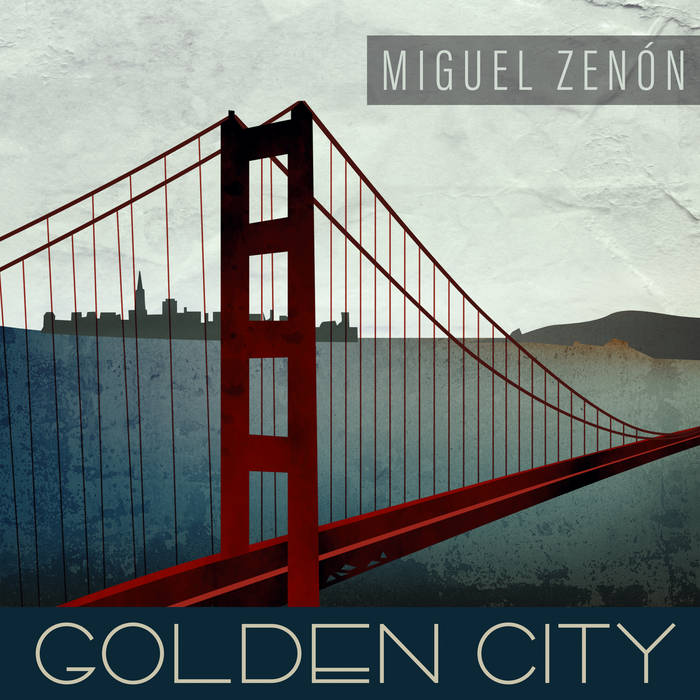
Lawrence: I wanted to ask you a little bit about the Golden City project. As I prepared for our time together, I struggled with how to ask this question. I'm so concerned about the way the immigrant experience is being sort of warped and twisted, especially in the time since you created that body of work—so much has happened in such a whirlwind amount of time—none of it particularly great. How do you see your work, if at all, through the light of the current moment?
Miguel: I mean, it's impossible to ignore what's happening in this country and all over the world, not just related to what you mentioned—how we view immigrants, how we view this idea of people coming from elsewhere, and just how we think about people in general. So it is impossible not to be impacted as a human being. And of course, for me—and again, this is not a role or something that I feel applies to everyone, but for me—what we do as creators is a reflection of who we are as people. So if you're affected by something as a human being, it has to be somehow reflected in what you do—whether it's music, literature, film, or whatever it is that you do, especially if it's something that's expressive or creative.
This project that you alluded to, Golden City, is something that I did in San Francisco a little while back. It was a commission from SFJAZZ. My idea when I first thought of it was to think about it from the perspective of history. I wanted to think about the history of the Bay Area, San Francisco, and even greater California. And I wanted to specifically focus on the immigrant experience, mainly because I felt that a place like San Francisco, just like New York and any major urban hub in the world, is affected by people coming from elsewhere. So you have these large communities of migrants coming into cities, really impacting the DNA and identity of each city. So in this case, it was San Francisco specifically because of SFJAZZ, but it could have been anywhere.
What I discovered, though, was that the experience was deeply marked by the immigrant's experience of coming from another place. So the trauma, if you will, of having to come from another place—sometimes even being forced to leave that place for one reason or another—to go to a place where you feel that you can be more secure, that your family's going to be in a better place to succeed and have a better life. But the experience of that and then the experience of being in a place as an alien—as someone who is not from there—is viewed by others as not belonging there, not meant to be there.
And what I discovered is that this has been happening for hundreds of years. In the case of California, you go back to the gold rush. You go back to the initial immigrants from China and Japan, and even to California being part of Mexico originally, and think about all these things and what they mean. I got to that place by accident, kind of by putting together all those dots, connecting them with history. And then I realized that was really the most powerful part of the project—this idea of what is the experience of an immigrant, specifically in this case, someone who came into this place, quote unquote, illegally, or someone who's trying to find a status in this new place.
And so when I did the project, I wasn't really thinking about all the crazy stuff that's happening now, but I spoke to a lot of people who are going through these experiences—not just immigrants themselves, but also organizations that work with immigrants. And the feeling that I got was that this is an ongoing struggle. It's something that had been going on for a while. They were just adapting to the times—okay, so these are the new rules. We're going to deal with these rules. This is what the rules were five years ago. This is what they could be in five years. We're trying to adapt to that.
Now, having said that, putting the project out and thinking about where things are, the direction things are going now is not something I personally could have foreseen when I was working on this project. It's getting so dark and going in a really negative direction. But also, it makes me think about all the people that I talked to whose lives are really devoted to fighting back, fighting back against the folks who are oppressing these groups of people, these individuals, fighting for their rights, fighting for their rights just to be human beings on this planet, to be human beings wherever you are.
Even though things look grim, it gives me solace to know firsthand that there are people around who are actually fighting back, and that's what they do. We're going to be there for these people. We're going to look out for them. We're going to try to see if there's anything we can do for them.
Lawrence: How, if at all, do you see the role of music in this struggle?
Miguel: I think it plays a pivotal role, but I also believe that as an artist, I see it as a responsibility to call out things that you see wrong in the world and use your platform, your art, your means of communication to voice them. I personally see that as a responsibility, and I think that it should be the responsibility of anyone who has that platform.
Now, having said that, I know a lot of people don't feel this way, and I know, personally, some artists will feel like, “Oh, you know, we should just let people who do that do that, and we do our thing.” But like I said, specifically with music, it has always served as a platform that functions as a connector. It's a way of reaching out to people, connecting people, bringing people together, communicating ideas, and et cetera. I do think that, especially now, but at any point in time, music needs to keep having that platform.
It's hard to say where things are going, but I know for a fact that music and musicians and artists are going to be there to deliver. They're going to be there to serve as a platform, as a vehicle to voice their concerns and to use their art to connect with others and to see how we can pull things in the right direction.
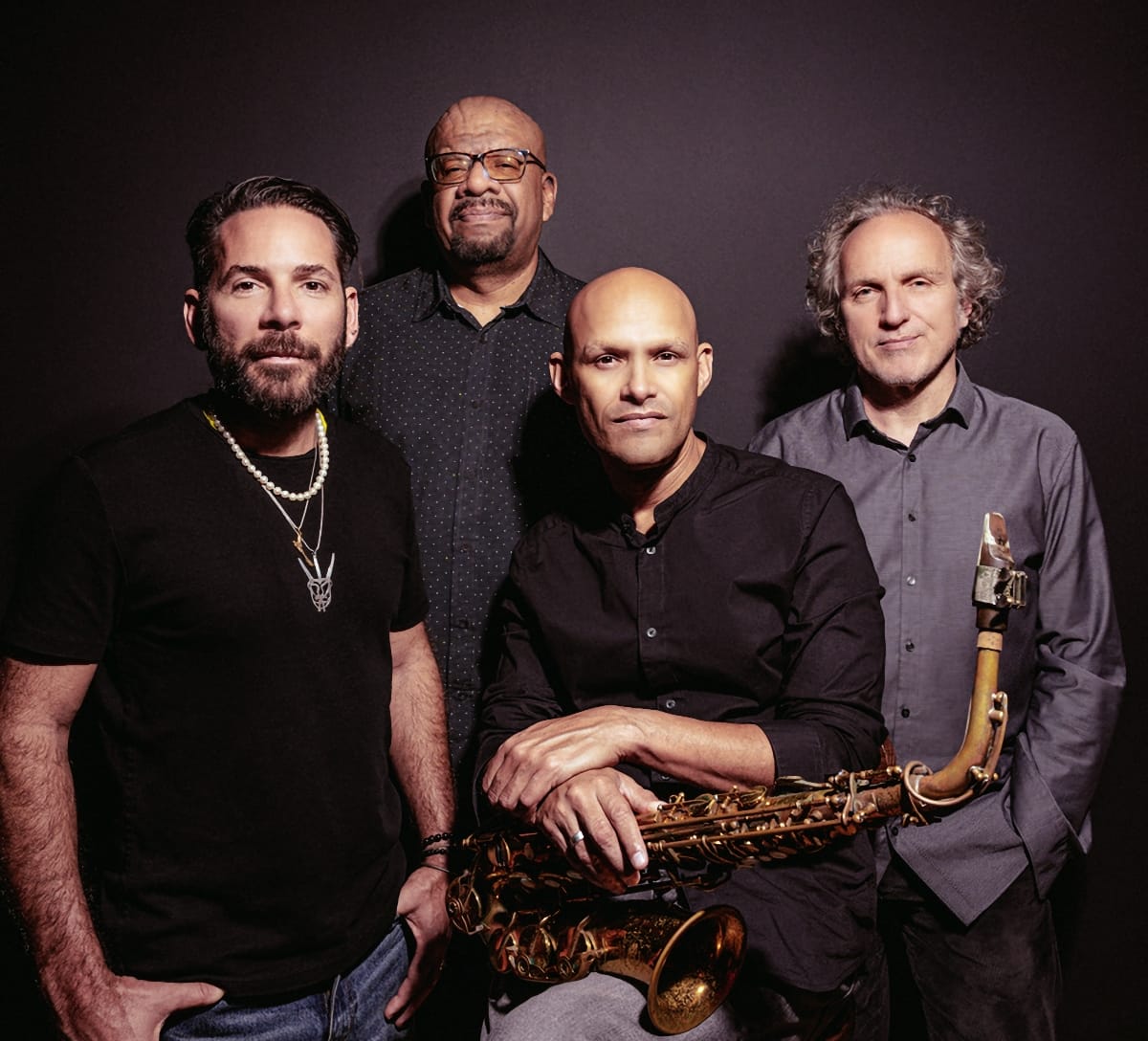
Lawrence: So you're heading back to the Vanguard very soon—in a few days. What program will you be presenting there?
Miguel: That's interesting because usually when we play the Vanguard, we either premiere something there—so we put a record out and then we play it there—or we've already prepared material and we go to the Vanguard and play stuff that's totally new and then go to the studio and record it. That's also happened in the past.
In this case, it's a combination of both, because we're premiering something we've recorded there. So it'll be a combination of all the music on the album and some other things from our past repertoire. But we'll definitely be focusing on the new album because it just came out, and we want to give people a chance to put the two together—having the album and having the music live in front of them, too.
Lawrence: Tell me, could you share a few of your favorite Vanguard records by other artists?
Miguel: Oh yeah. Some of my favorite albums of all time have actually been recorded at the Vanguard. I already mentioned Sonny Rollins, who I think is the first ever at the Vanguard. The first Coltrane, so the original Coltrane at the Vanguard recordings. And then another one that's probably one of my desert island records of all time is Keith Jarrett with the American Quartet—Dewey Redman, Charlie Haden, and Paul Motian. That album was called Fort Yawuh—untouchable.
Lawrence: People who have listened to my podcast have heard me say this probably way too many times, but that set of Coltrane music from November of '61—I think it represents potentially the peak of Western civilization. (laughter)
Miguel: Ah, yes. I mean, you really thank the heavens for someone being there that night with a recorder and recording that thing. I also feel that for me, it's kind of like peak Coltrane. And just as a side note, I remember having a conversation with someone, maybe Dave Liebman, who was there during those recordings and talking about their experience being in the room and saying, “You know, as incredible as it is to listen to it on record, imagine what the sound was like being in front of that in the sixties when nothing like that had ever been done before.” That sound that they had—it was so new and so unique. I can just imagine what it must have been like, but yeah, I'm just happy that we have that to go back to.
Check out more like this:
 The TonearmLawrence Peryer
The TonearmLawrence Peryer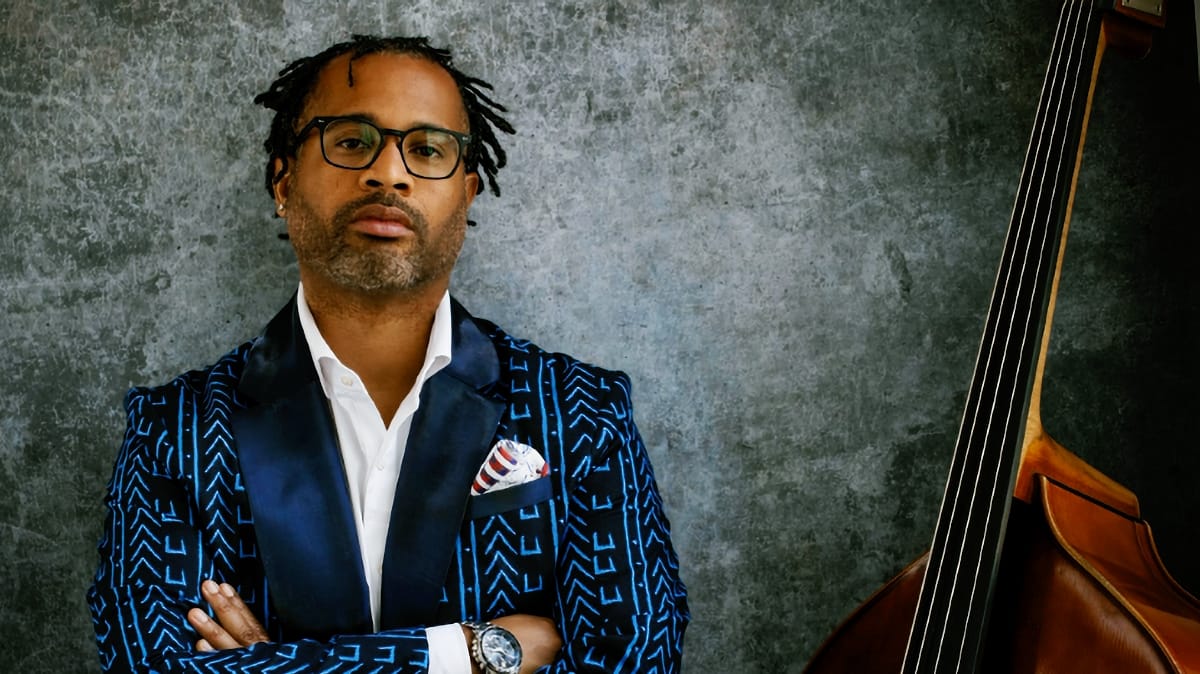
 The TonearmMiguel Angel Bustamante
The TonearmMiguel Angel Bustamante





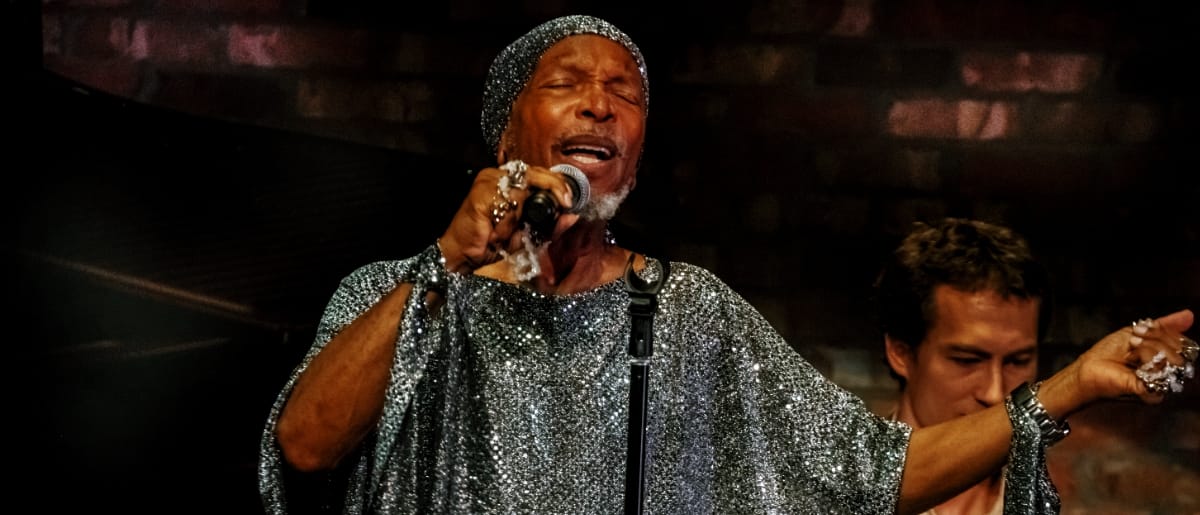
Comments